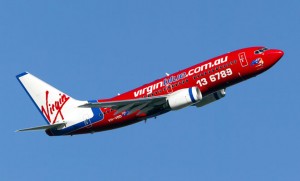
A series of errors by air traffic controllers at RAAF Williamtown that lead to a breakdown in separation between a Virgin Blue 737 and a defence-chartered Westwind business jet in February 2011, according to an ATSB report.
The report says the RAAF controllers maintained the two aircraft on a mirror image course despite urgent warnings from civil air traffic controller who were also tracking the two aircraft. The aircraft missed each other by just over 100 metres – well under half the required separation – and only after the Virgin flightcrew altered course in response to a warning from the aircraft’s Traffic and Collision Avoidance System (TCAS).
“The investigation identified a series of errors by the Williamtown Approach controllers involving separation assurance, coordination and communication, and compromised separation recovery,” the ATSB report said.
More troublingly, the February 1 2011 incident was one of 10 “breakdowns of separation” involving Williamtown controllers between January 2010 and June 2011, the ATSB said. The report noted that DoD has since conducted an internal investigation into the problems and has “implemented safety actions, at the local level, in response to their investigation findings.” The ATSB said it was satisfied with those measures.
The report does not say how many people were on board either the 737 or the defence chartered Westwind 1124 at the time of the incident. The 737-700 is configured to carry 144 passengers
The Melbourne-bound Virgin flight had taken off from Williamtown while the charter jet was on approach to the base, according to the report. At their closest point, the two aircraft passed each other with a separation of 0.7nm vertically and 400ft horizontally. Flight rules require a separation of 3nm horizontally and 1000ft vertically.
The ATSB flagged poor communication between two controllers, one of whom was responsible for airspace up to 5000ft (Approach Low) and the other handling airspace above 6000ft (Approach High), as a key cause of the near miss.
“The aircraft involved were subject to different control jurisdictions and on separate frequencies,” the report said, adding that “controllers did not manage the compromised separation recovery effectively.”















